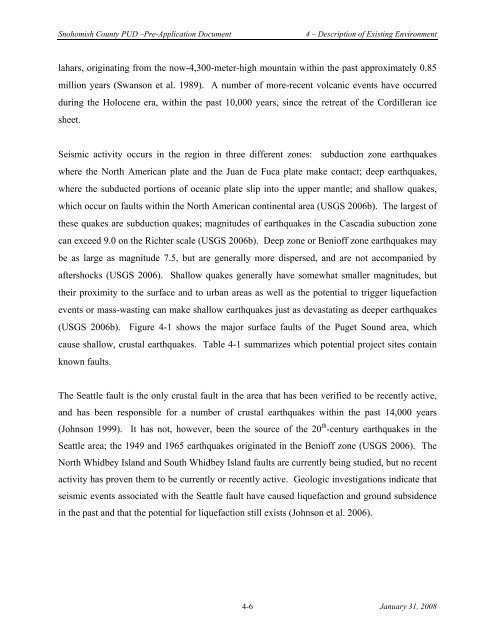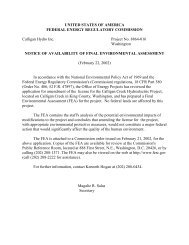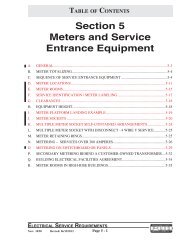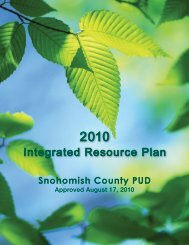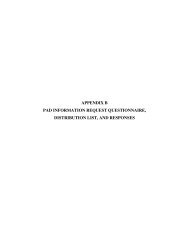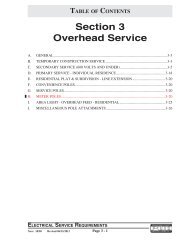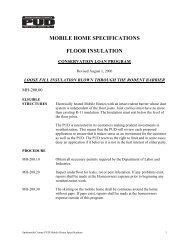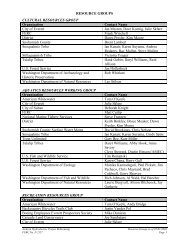Tidal_PAD_V1_Sec4.pdf - Snohomish County PUD
Tidal_PAD_V1_Sec4.pdf - Snohomish County PUD
Tidal_PAD_V1_Sec4.pdf - Snohomish County PUD
Create successful ePaper yourself
Turn your PDF publications into a flip-book with our unique Google optimized e-Paper software.
<strong>Snohomish</strong> <strong>County</strong> <strong>PUD</strong> –Pre-Application Document<br />
4 – Description of Existing Environment<br />
lahars, originating from the now-4,300-meter-high mountain within the past approximately 0.85<br />
million years (Swanson et al. 1989). A number of more-recent volcanic events have occurred<br />
during the Holocene era, within the past 10,000 years, since the retreat of the Cordilleran ice<br />
sheet.<br />
Seismic activity occurs in the region in three different zones: subduction zone earthquakes<br />
where the North American plate and the Juan de Fuca plate make contact; deep earthquakes,<br />
where the subducted portions of oceanic plate slip into the upper mantle; and shallow quakes,<br />
which occur on faults within the North American continental area (USGS 2006b). The largest of<br />
these quakes are subduction quakes; magnitudes of earthquakes in the Cascadia subuction zone<br />
can exceed 9.0 on the Richter scale (USGS 2006b). Deep zone or Benioff zone earthquakes may<br />
be as large as magnitude 7.5, but are generally more dispersed, and are not accompanied by<br />
aftershocks (USGS 2006). Shallow quakes generally have somewhat smaller magnitudes, but<br />
their proximity to the surface and to urban areas as well as the potential to trigger liquefaction<br />
events or mass-wasting can make shallow earthquakes just as devastating as deeper earthquakes<br />
(USGS 2006b). Figure 4-1 shows the major surface faults of the Puget Sound area, which<br />
cause shallow, crustal earthquakes. Table 4-1 summarizes which potential project sites contain<br />
known faults.<br />
The Seattle fault is the only crustal fault in the area that has been verified to be recently active,<br />
and has been responsible for a number of crustal earthquakes within the past 14,000 years<br />
(Johnson 1999). It has not, however, been the source of the 20 th -century earthquakes in the<br />
Seattle area; the 1949 and 1965 earthquakes originated in the Benioff zone (USGS 2006). The<br />
North Whidbey Island and South Whidbey Island faults are currently being studied, but no recent<br />
activity has proven them to be currently or recently active. Geologic investigations indicate that<br />
seismic events associated with the Seattle fault have caused liquefaction and ground subsidence<br />
in the past and that the potential for liquefaction still exists (Johnson et al. 2006).<br />
4-6 January 31, 2008


